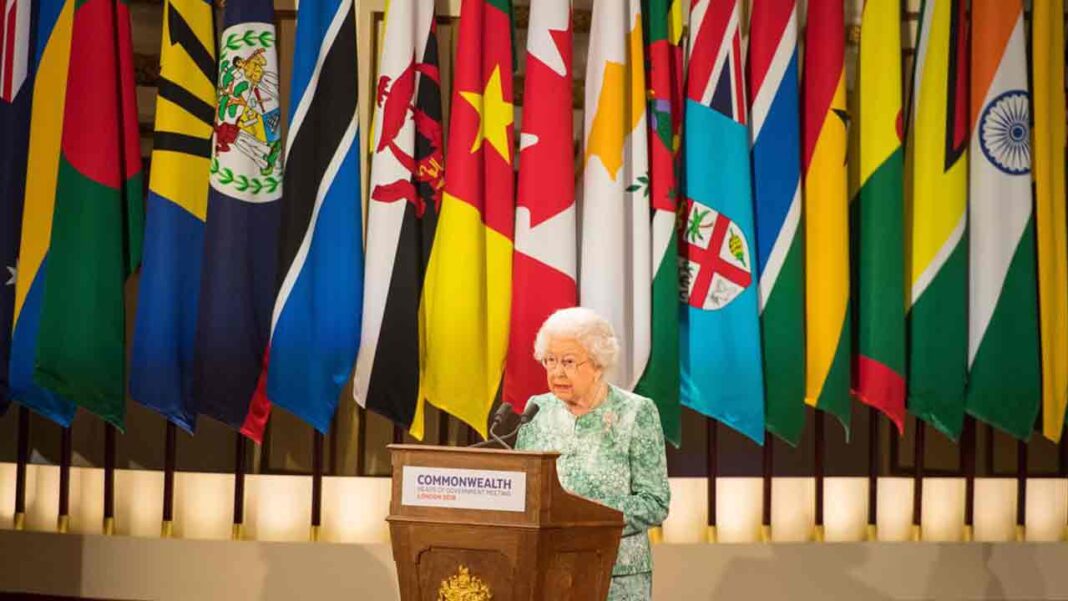Sterling Area Network is important in the context of present CW to look into the most defined economic network in the post-war Commonwealth.
The fundamental role of the network was to allow member countries to make the best use of the hard currency (in particular dollars) available to them. Wartime disruption had lessened the ability of Sterling Area countries to earn dollars through exports and foreign investment.
Reconstruction and development programmes had sharply augmented their need for hard currency to purchase equipment, foodstuffs and other goods in North America. Although the main purpose of the Sterling Area was the operation of currency controls, this required the regulation of trade to ensure the protection of the currency pool.
Common Pool
It operated on several levels. All dollars and dollar substitutes, such as newly mined gold, generated by members were deposited in a common pool. The ability of members to withdraw from this pool varied according to their degree of independence. However, Britain could do as it wished as long as sufficient dollars were available in the pool. Dominions (sovereign governments) that held sterling balances (again deposited in London) were allowed to convert them into gold or dollars to cover spending in hard-currency countries. They were trusted to keep their levels of conversion within `reasonable’ limits. If that trust had been severely abused, however, the British could have denied wrong-doer dominions access to the pool.
Dependent colonies and some Asian and Middle Eastern members were given more restricted access to the dollar pool. India and Egypt had accumulated huge sterling balances during the war. However, they were not permitted to convert these freely. The dollar surpluses of dependent colonies that exported heavily to the USA, such as Nigeria and Malaya, also had gone into the dollar pool, but these and other colonies were rarely permitted to withdraw dollars to finance imports.
In order to economize on the use of hard currency, members were expected, whenever possible, to import from other members or at least from other soft currency areas. Thus, the traditional division of labour within the area was to be upheld, with Britain acting as the main supplier of manufactures, and the other members supplying food and raw materials.
Significant competence trust was required as the British were expected to be able and willing to provide high quality and reasonably priced manufactures on tight schedules and at the same time, the other members were expected to be able and willing to send sufficient quantities of primary produce to Britain.
The initial importance was on recovery from underinvestment in the interwar years and damage and underinvestment during the war. In theory, increases in personal consumption were to be delayed, while productive capacity was rebuilt. But, in practice, there were some deviations from this policy. Britain, for example, diverted substantial dollar holdings to rebuilding its foreign investment, and Australia spent a great deal on a development programme that emphasized immigration and import substitution industrialization (ISI).
From 1945 to mid-1950, Britain not only held the dollar deposits of the entire Sterling Area, but also functioned as the sole governmental channel through which dollars were borrowed or granted as gifts. Legally, the $3.75 billion loan from the USA and $1.25 billion gift from Canada in 1946 went to Britain. However, they increased the size of the dollar pool for all members of the Sterling Area. In the same manner, in 1949 Marshall Aid was allocated to cover the dollar deficit of the entire Sterling Area.
The dominions’ association with Britain allowed them access to dollars, well in excess of the amounts they could have earned on their own. Before the middle of 1950, Britain, at the centre of the network, had direct, but weak, ties with the USA, the IMF and the World Bank, while the other members of the area were connected to Britain. The dominions were in reciprocal relationships with Britain, as indicated by the two-way arrows. However, the colonies had little ability to influence policy.
Disintegration of SA
However, this picture began to change in 1950 due to several factors; as its raison d’etre disappeared, the Sterling Area began to disintegrate. The initial cause was a general increase in the availability of dollars in 1949, which enhanced with the outbreak of the Korean War, as the USA increased its imports of strategic materials, while a change in government in Australia in 1949 led to a more independent external financial policy. The new Menzies government decided that it needed more dollars than were available through the Sterling Area to pursue Australia’s development goals, and approached the USA and the World Bank directly for a dollar credit. As a token of appreciation for Australian support in Korea, Washington arranged for the World Bank to loan money to Australia on special terms.
From the standpoint of the Sterling Area, this generated an important change in the configuration of the network. Once Australia had established its own weak ties to dollar sources, Britain’s dominance was seriously compromised and the borders of the network began to blur. The dollar pool remained an important source of foreign exchange until convertibility of sterling was restored in 1958. However, it was supplemented by other sources.
Despite continuing British pressure for the coordination of development activities to maintain `complementarity’, other Commonwealth members were determined to industrialize. In the early 1950s, Britain joined other members in encouraging higher direct exports to dollar countries, as well as more US foreign investment in the Sterling Area.
The Australian treasurer, Sir Arthur Fadden, in 1952 stated “Unless we and other countries in the sterling area can develop our resources and expand our earning power there can be no hope of breaking through the net-work that has enmeshed us since the war, and we must resign ourselves to living indefinitely within a largely closed system which appears to become more narrowly constricted with each successive crisis.”
Collapse of Sterling Area
The gradual collapse the Sterling Area, as critics argued, was, mainly, due to its inability to delivering as much hard currency as might have been gained through a more flexible regime. In 1952, the British agreed to make a special effort to provide more capital for approved Sterling Area development. But this enthusiasm was quickly died down. By the mid-1950s, there was a growing opinion in Britain that outward capital flows to the rest of the Sterling Area were depriving domestic industries of funds for modernization.
The imposition of quantitative restrictions on British imports in 1952, by Australia and other Sterling Area countries in financial difficulties, resulted in a serious loss of goodwill trust.
What is noteworthy is that the collapse of the Sterling Area which , once, was the most defined economic network of the CW was due more to external factors. However, once again, need for such an economic network has arisen due to the rapidly changing world order and the re-emergence of CW as a Commonwealth union, perhaps, as formidable economic block.
















